Proposal for Improving the Historical, Cultural and Aesthetic Environment of the Cross-River Bridges of Guangzhou, as part of a competition at Zaha Hadid Architects, and for which the office awarded an Honorable Mention.
Project Location
• Bridge 01 – RenMin Bridge
• Bridge 02 – JiangWan Bridge
• Bridge 03 – Haiyin Bridge
• Bridge 04 – Liede Bridge
• Bridge 01 – RenMin Bridge
• Bridge 02 – JiangWan Bridge
• Bridge 03 – Haiyin Bridge
• Bridge 04 – Liede Bridge


Design Scope
Covering the main bodies of Renmin Bridge (both old and new), Jiangwan Bridge, Haiyin Bridge, and Liede Bridge with the surrounding public space, including approaches, viaduct, parks at the approaches, and adjacent public space.
The design proposals submitted should be in keeping with the current city planning objectives and exhibit the unique characteristics, history and culture of this city. Your design proposal for each bridge must take into consideration the functionality, landscape, uniqueness, practicability and other related aspects.
Covering the main bodies of Renmin Bridge (both old and new), Jiangwan Bridge, Haiyin Bridge, and Liede Bridge with the surrounding public space, including approaches, viaduct, parks at the approaches, and adjacent public space.
The design proposals submitted should be in keeping with the current city planning objectives and exhibit the unique characteristics, history and culture of this city. Your design proposal for each bridge must take into consideration the functionality, landscape, uniqueness, practicability and other related aspects.
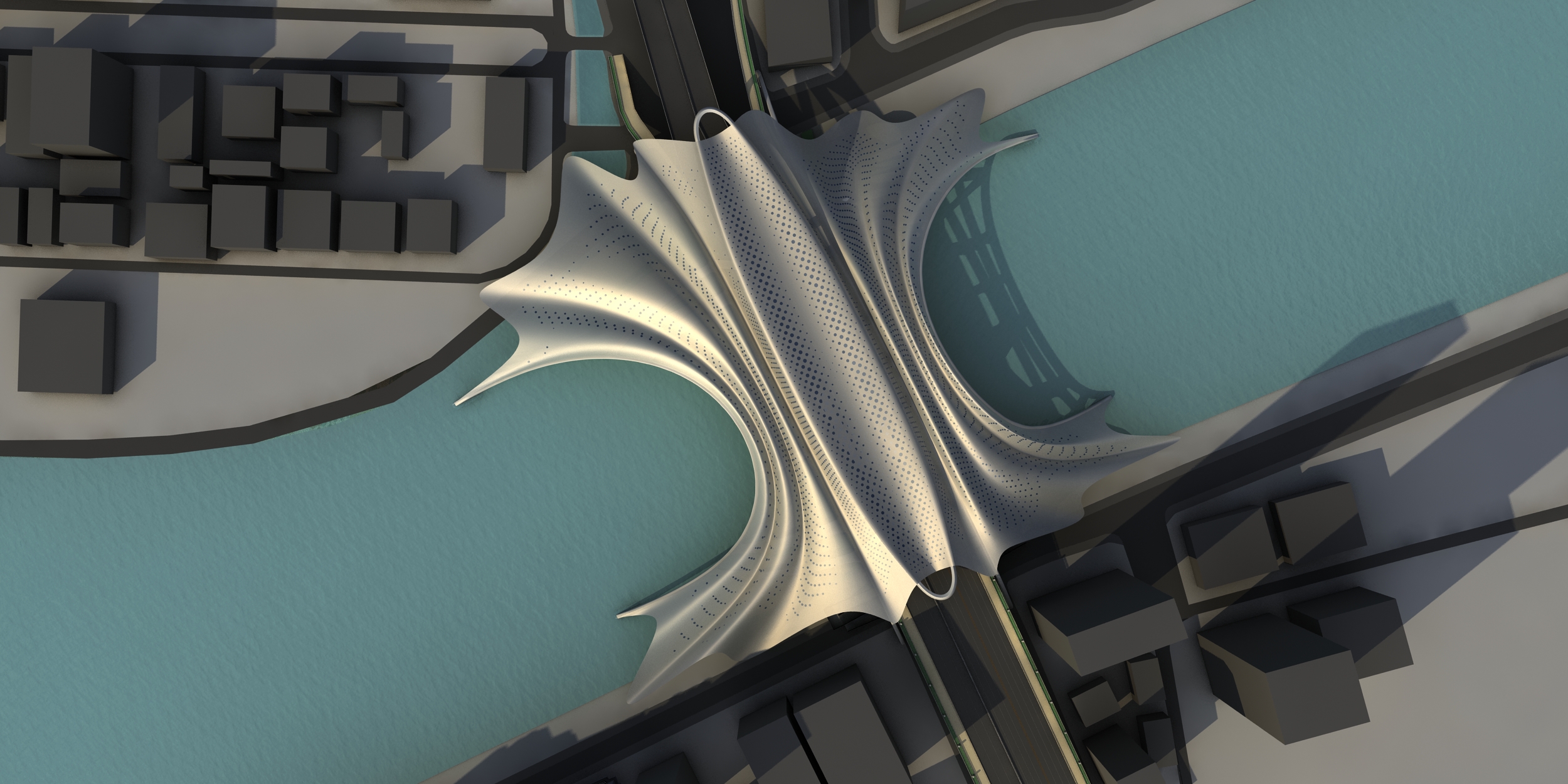
At the macro level
Clarify the subject of improving the historical, cultural and aesthetic environment of the cross-river bridges of Guangzhou. combined with the orientation of Guangzhou city function, dug deep into the historical and cultural meaning of Guangzhou local culture and the current situations of the bridges in order to define the cultural theme of improving the environment of the bridges at the macro level and to improve the historical and cultural meaning of the cross-river bridges, realizing the objective of distinctive theme and “one bridge, one scene”.
Clarify the subject of improving the historical, cultural and aesthetic environment of the cross-river bridges of Guangzhou. combined with the orientation of Guangzhou city function, dug deep into the historical and cultural meaning of Guangzhou local culture and the current situations of the bridges in order to define the cultural theme of improving the environment of the bridges at the macro level and to improve the historical and cultural meaning of the cross-river bridges, realizing the objective of distinctive theme and “one bridge, one scene”.

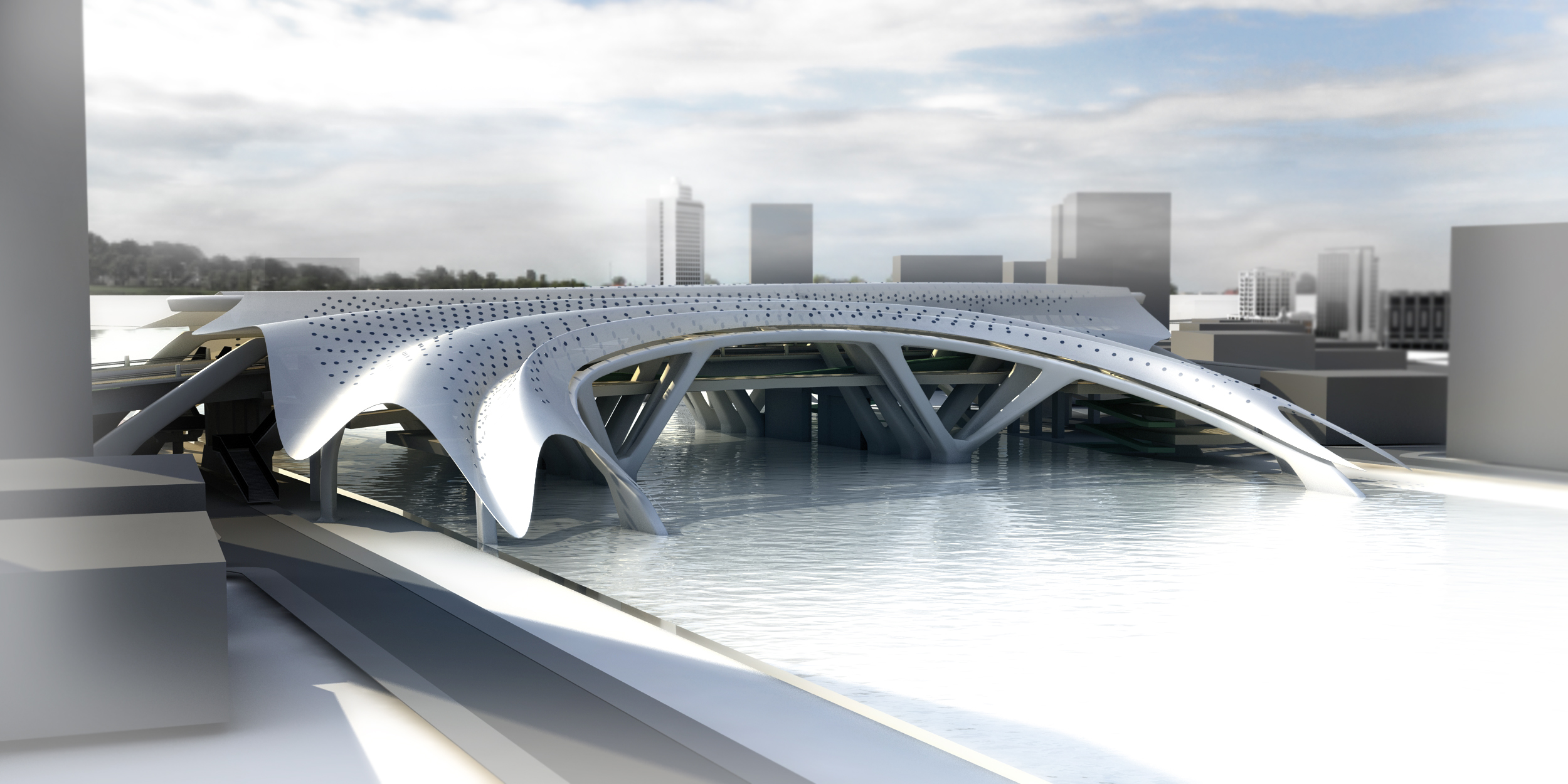
Context
Guangzhou (also known as Canton, and less commonly as Kwangchow) is the capital and largest city of Guangdong province in South China. Located on the Pearl River, about 120 km (75 mi) north-northwest of Hong Kong and 145 km (90 mi) north of Macau, Guangzhou serves as an important national transportation hub and trading port. One of the five National Central Cities, it holds sub-provincial administrative status.
Guangzhou is the third largest Chinese city and the largest city in South Central China. In 2014 the city's administrative area was estimated to have a population of 13,080,500. The total population of this agglomeration is over 54 million, including the population of adjacent city Hong Kong. Guangzhou is identified as a Beta+ world city.
Located in the south-central portion of Guangdong, Guangzhou spans from 112° 57' to 114° 03' E longitude and 22° 26' to 23° 56' N latitude.
Guangzhou (also known as Canton, and less commonly as Kwangchow) is the capital and largest city of Guangdong province in South China. Located on the Pearl River, about 120 km (75 mi) north-northwest of Hong Kong and 145 km (90 mi) north of Macau, Guangzhou serves as an important national transportation hub and trading port. One of the five National Central Cities, it holds sub-provincial administrative status.
Guangzhou is the third largest Chinese city and the largest city in South Central China. In 2014 the city's administrative area was estimated to have a population of 13,080,500. The total population of this agglomeration is over 54 million, including the population of adjacent city Hong Kong. Guangzhou is identified as a Beta+ world city.
Located in the south-central portion of Guangdong, Guangzhou spans from 112° 57' to 114° 03' E longitude and 22° 26' to 23° 56' N latitude.
The city is part of the Pearl River Delta and the city centre is situated next to the Baiyun Mountain, which is locally referred to as "the lung of the city". The total area under the city's administration is 7,434.4 square kilometres (2,870.4 sq mi).
Located just south of the Tropic of Cancer, Guangzhou has a humid subtropical climate influenced by the East Asian monsoon. Summers are wet with high temperatures, high humidity, and a high heat index. Winters are mild and comparatively dry. Guangzhou has a lengthy monsoon season, spanning from April through September. Monthly averages range from 13.6 °C (56.5 °F) in January to 28.6 °C (83.5 °F) in July, while the annual mean is 22.6 °C (72.7 °F), the relative humidity is approximately 68 percent, whereas annual rainfall in the metropolitan area is over 1,700 mm (67 in). With monthly percent possible sunshine ranging from 17 percent in March and April to 52 percent in November, the city receives 1,628 hours of bright sunshine annually, considerably less than nearby Shenzhen and Hong Kong. Extreme temperatures have ranged from 0 °C (32 °F) to 39.1 °C (102 °F). The last recorded snowfall in the city was in January 1893.

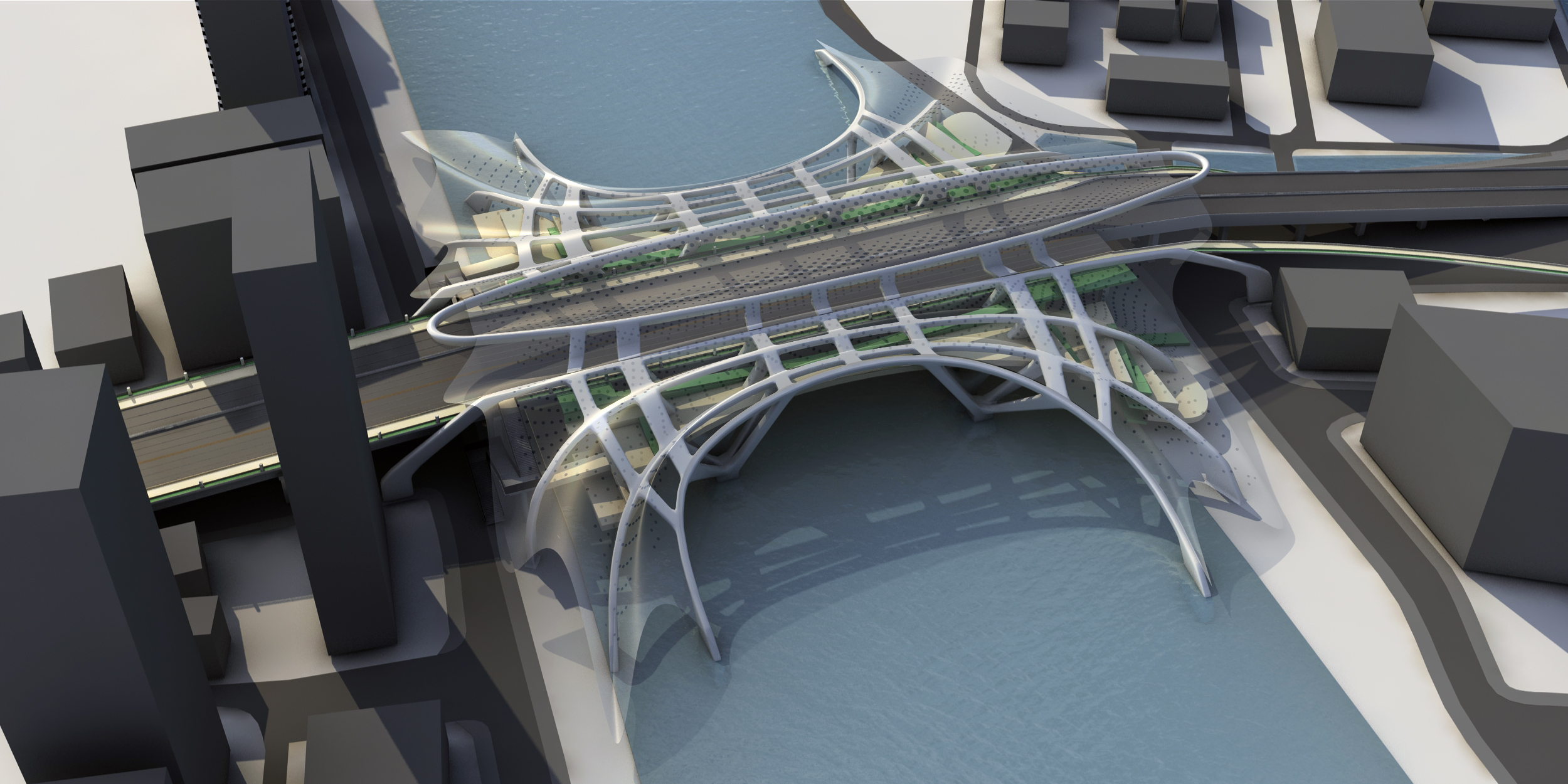
At the mesoscopic level
Improve the main landscapes of the bridges and improve the environment of the bridgehead spaces. Taking the interface along the river, the city’s landmarks and architecture style, the continuity of the vertical landscape of roads and other relevant factors into full consideration, harmonize the main bodies and the surrounding environment of the bridges at the mesoscopic level and make flexible use of the bridgehead spaces by improving the landscapes of the bridges and the environment of the bridgehead spaces so as to reveal the orientation of each cross-river bridge’s theme and to stand out the landscape character of both banks of the pearl river.
Improve the main landscapes of the bridges and improve the environment of the bridgehead spaces. Taking the interface along the river, the city’s landmarks and architecture style, the continuity of the vertical landscape of roads and other relevant factors into full consideration, harmonize the main bodies and the surrounding environment of the bridges at the mesoscopic level and make flexible use of the bridgehead spaces by improving the landscapes of the bridges and the environment of the bridgehead spaces so as to reveal the orientation of each cross-river bridge’s theme and to stand out the landscape character of both banks of the pearl river.

At the micro level
Improve the historical, cultural and aesthetic environment of the main factors of the bridges, which include the style design of the bridges’ main bodies, nightscape lighting, colours of bridges, non-motor traffic system, viewing platform, bridgehead tower, pedestrian stairs, handrails and street lamps. The bridgehead space is comprised of the approach span, bridgehead park, bridge bottom and other surrounding open space. The main factors of the bridges shall adopt the human-centred design to improve their discrimination capacity and aesthetic quality.
Improve the historical, cultural and aesthetic environment of the main factors of the bridges, which include the style design of the bridges’ main bodies, nightscape lighting, colours of bridges, non-motor traffic system, viewing platform, bridgehead tower, pedestrian stairs, handrails and street lamps. The bridgehead space is comprised of the approach span, bridgehead park, bridge bottom and other surrounding open space. The main factors of the bridges shall adopt the human-centred design to improve their discrimination capacity and aesthetic quality.
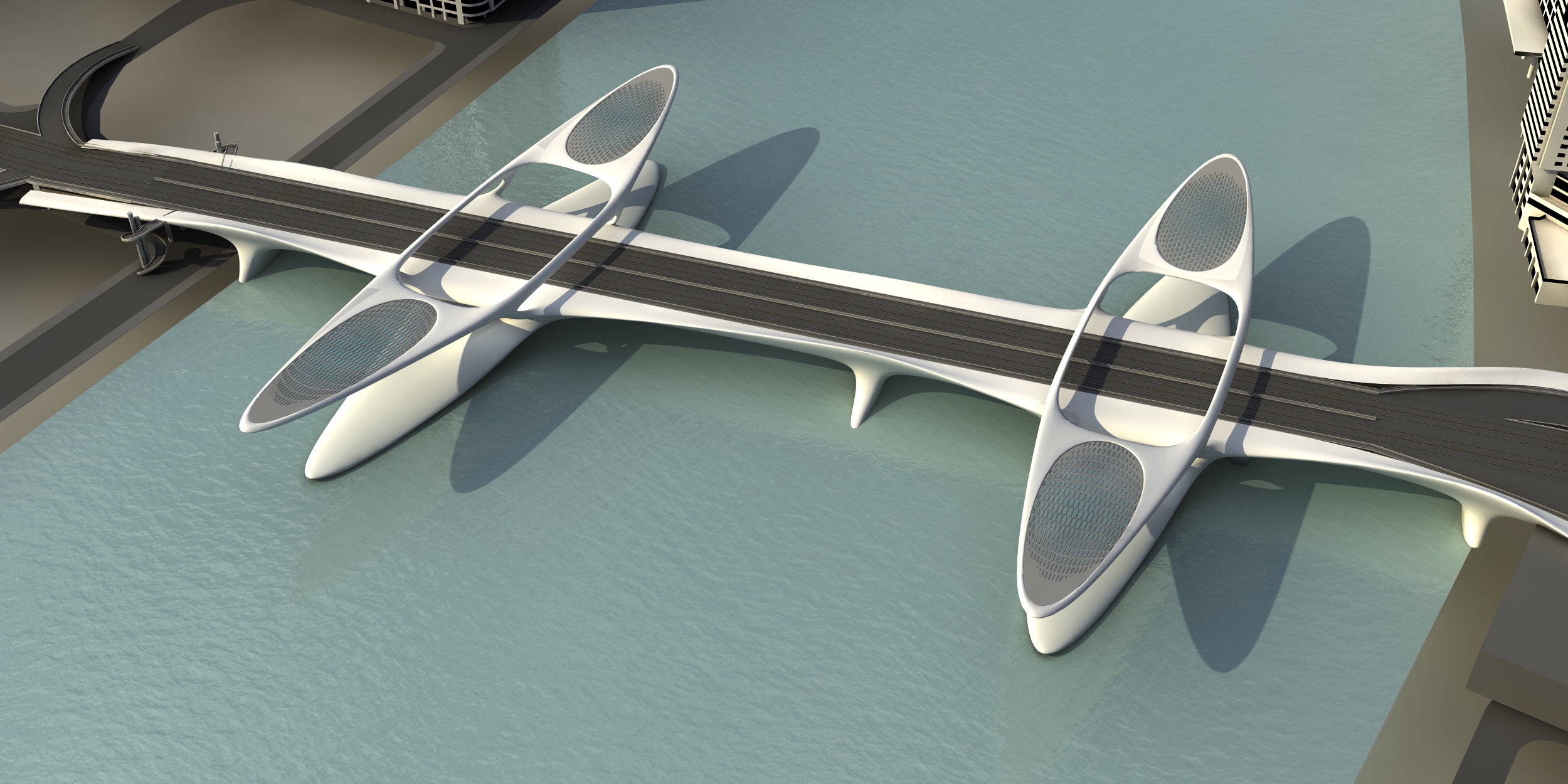

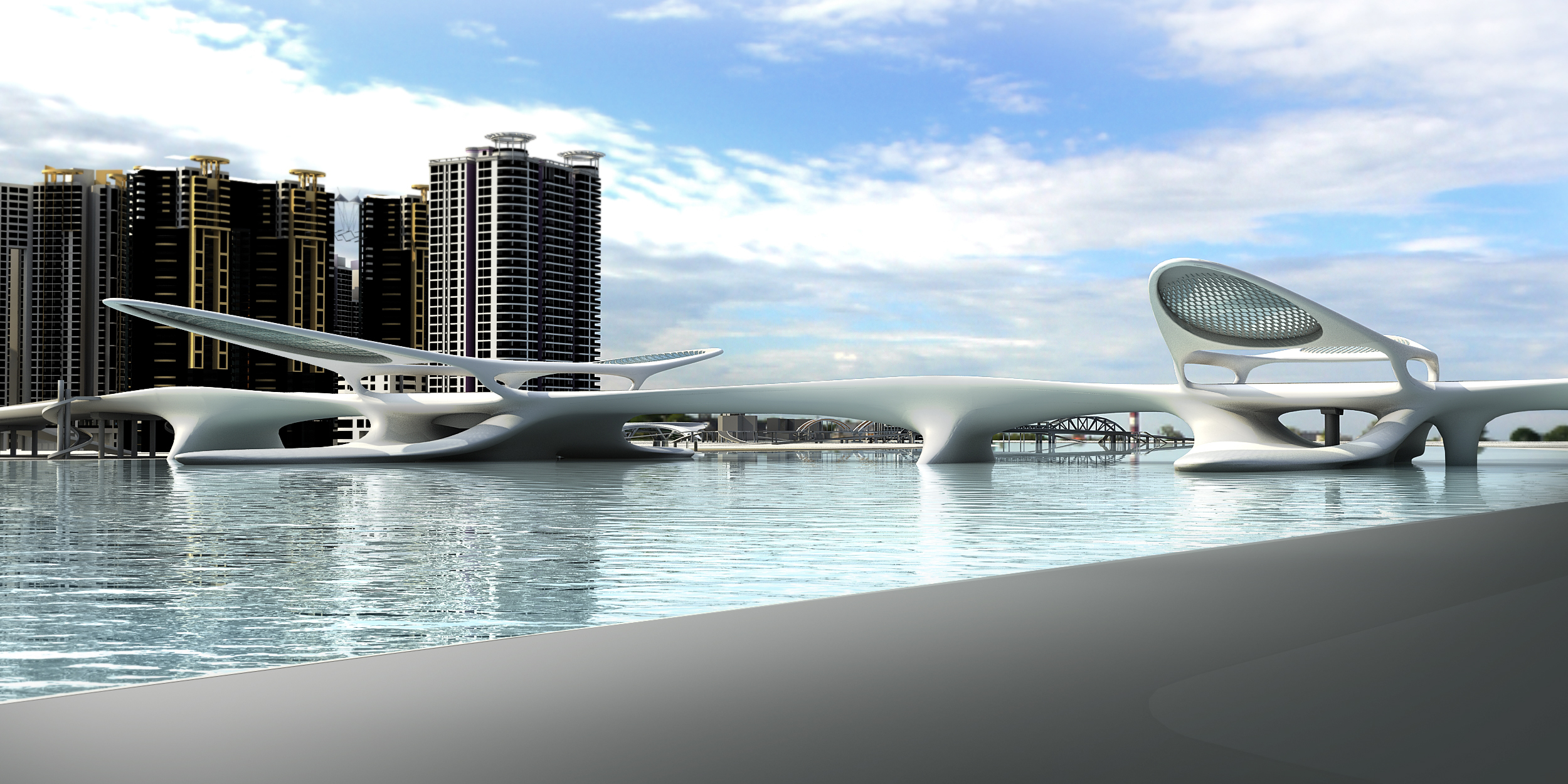


Zaha Hadid Architects
In-House Competition2015